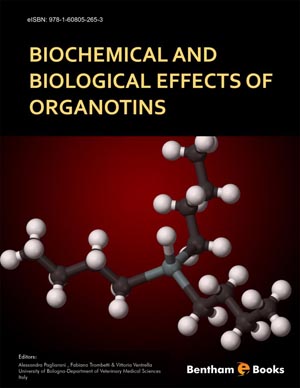Abstract
OTC are characterized by the presence of at least one covalent C–Sn bond. The compounds contain tetravalent {Sn} centre and are classified as mono-, di-, tri- and tetraorganotins, depending on the number of alkyl (R) or aryl (Ar) moieties. The counter anions are usually Cl–, F–, O2–, OH–, –COO– or –S2–. The nature of the anionic group has only secondary importance. The organotin(IV) compounds display biological activity in aquatic environments. Most of the compounds are very toxic, even at low concentration. The biological activity is essentially determined by the number and nature of the organic groups bound to the central {Sn} atom, and by the structure of compounds. The [R3Sn(IV)]+ and [Ar3Sn(IV)]+ derivatives exert powerful toxic action on the central nervous system. Within the series of [R3Sn(IV)]+ compounds, the lower homologues (Me, Et) are the most toxic and the toxicity decreases progressively from propyl (Pr) to octyl (Oc), the latter not being toxic at all. The structure is varied between regular or distorted tetrahedral Th, trigonal-bipyramidal Tbp and octahedral Oh. Some of the complexes display antitumor activity. The mechanism of biological (including antitumor) action is still unclear.
Keywords: Metabolism - biomolecules - antitumor activity - organotin structures - QSAR.






















